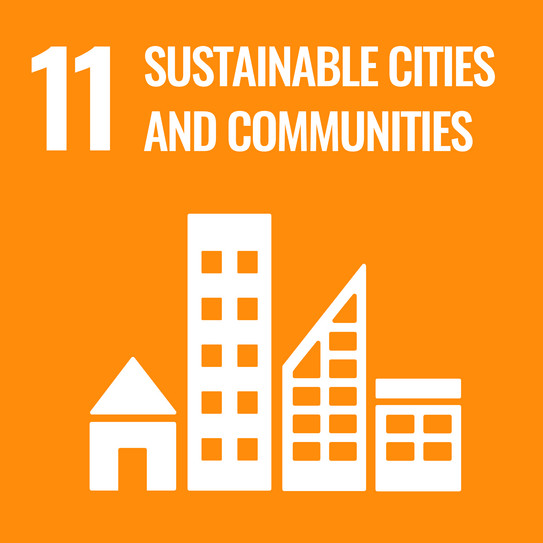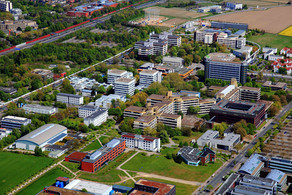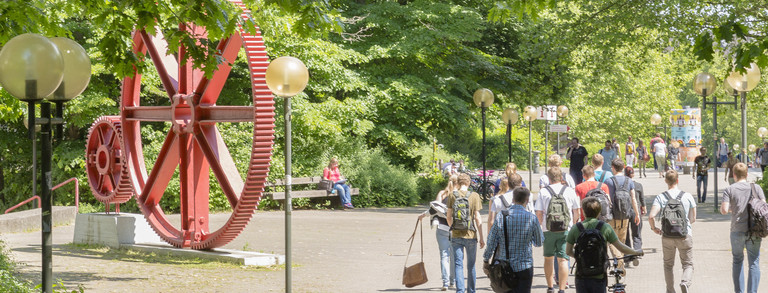Goal 11: Sustainable cities and communities
The goal is divided into several sub-goals. SDG 11 resolves to improve access to safe, affordable housing and transport systems (11.1 + 11.2). Special attention should be paid to older people or people in precarious situations or with disabilities, as well as women and children. Overall, urbanisation should be made more inclusive, planned in a participatory manner and take into account world cultural and natural heritage sites (11.3 + 11.4). Reduce per capita urban pollution, air quality and waste treatment, and significantly reduce deaths and affected people due to disasters (11.5 + 11.6). Promoting access to safe and inclusive green public spaces is a goal (11.7).
At the same time, national and regional development planning should be promoted and social as well as ecological links between urban and rural areas strengthened (11.a). Policies and plans to promote the above measures in cities and settlements are to be increased by 2020 and the aim is to support least developed countries through financial and technical assistance in the construction of sustainable buildings using regional materials (11.b + 11.c).

News on sustainable cities and communities
Rainwater infiltration
- Projekte
- 6 Sauberes Wasser und Sanitäreinrichtungen
- 11 Nachhaltige Städte und Gemeinden
The precipitation that pours down on one of the largest buildings at TU Dortmund University has been collected in front of the building at Emil-Figge-Straße 50 since 2003. This has created a small pond surrounded by reeds on our campus. What is pleasing about this is not only the beautiful piece of nature, but also that the rainwater is no longer fed into the sewage system as dirty water and instead seeps into the ground naturally.
The rainwater infiltration project was awarded the "Water Mark" by the Emschergenossenschaft and included in the "Route of Rainwater".

A new rainwater retention basin was built not far from the existing area, which is intended to protect the campus from flooding during heavy rain events, among other things. The TU Dortmund University has already identified other suitable potential areas for rainwater infiltration and wants to implement the successful project idea at other locations on campus.
Plant maintenance
The rainwater infiltration project in front of EF 50 is a construction, that needs maintenance in order to sustain its infiltration properties. This requires a yearly removal of the old water reed.




